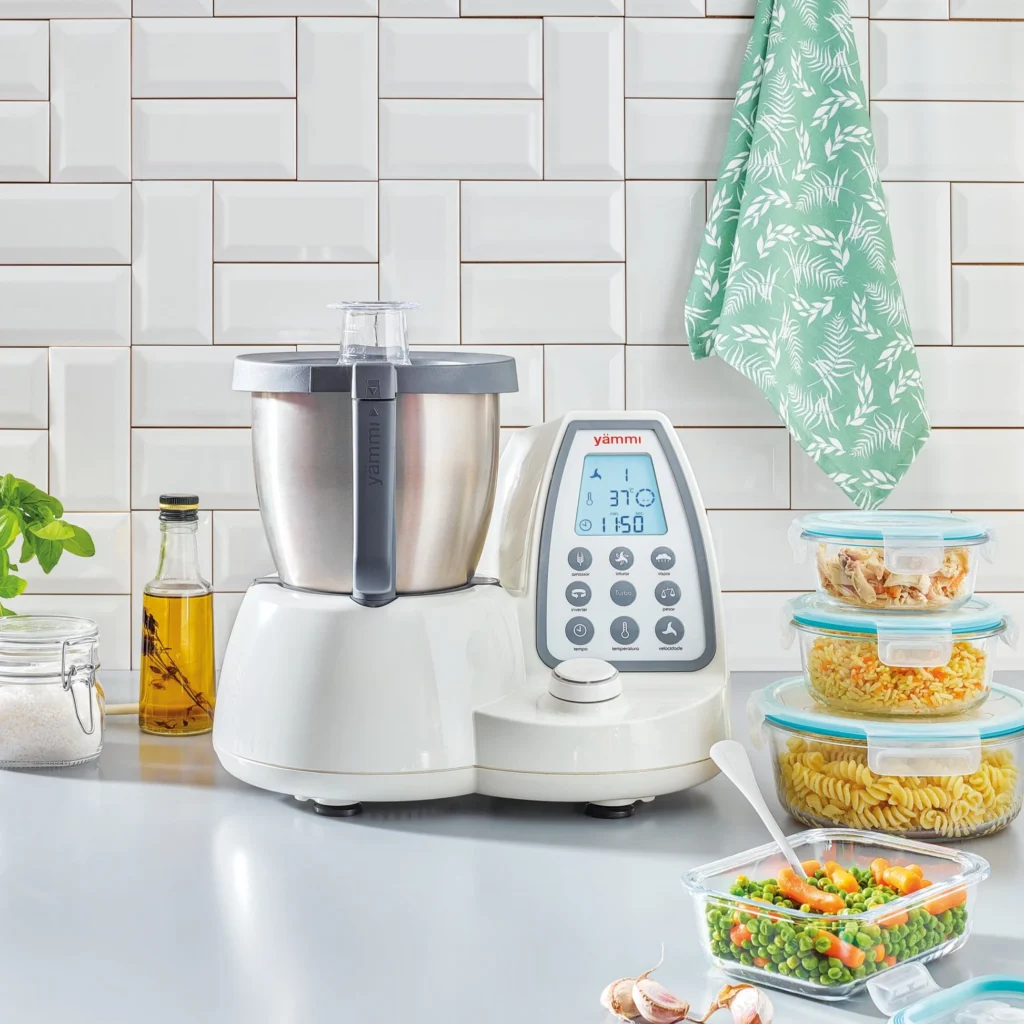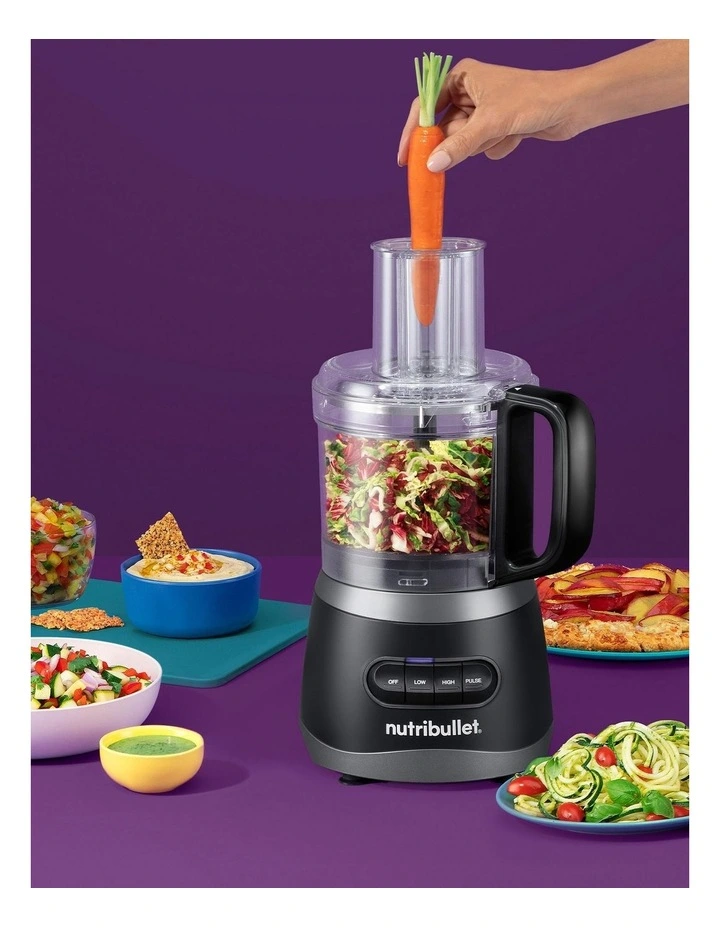Making your own baby food might sound like a whole mission, but it turns out many concerned parents in South Africa are choosing to do just that. Why? Simply because they want full control over ingredients and quality.
But here comes the big decision: food processor or blender for baby food? Is one better? Do you need both? And what do those product names even mean these days?
Let’s break it all down, compare three great options from Hirsch’s, and make this exciting baby food journey feel a lot less like guesswork.
What Is a Food Processor?
The term “food processor” often gets thrown around to describe anything that chops, blends, or mixes food. But technically, a food processor refers to a multi-functional kitchen appliance with attachments for chopping, slicing, shredding, kneading, and sometimes blending.
That said, many modern appliances blur the lines. Some blenders come with chopping attachments. Some food processors include a blending jug. And then you get hybrid machines that do absolutely everything except wash themselves.
Are Food Processors And Blenders The Same?
Not really, no. Blenders usually handle liquids better. They’re great for smooth purees, soups, and smoothies. Food processors are better at dry or semi-solid ingredients and can shred, dice, or knead.
Again, some smart tech tools do both, and do them well.
What’s the difference between a blender and a food processor? Here it is in a nutshell:
- Blender: Strong blades, fixed jug, works best with liquids
- Food Processor: Multiple attachments, wider bowl, better for solids and prep work
Some parents swear by a simple stick blender. Others need a full-blown all-in-one that can steam, cook, chop, and mash. Let’s look at some options.
Product Comparison Table
| Feature | Yammi Cooking Robot | Kenwood Chef Baker XL | NutriBullet Food Processor |
| Functions | Multicooker, steamer, chopper, blender | Mixer with attachments (whisk, dough hook, blender) | Chop, shred, slice, puree |
| Baby Food Use | Cooks and blends all-in-one | Mixes and blends but no cooking | Purees and chops raw/steamed ingredients |
| Ease of Use | One-touch programs, touchscreen | Manual controls, more suited for baking | Simple dials, easy to clean |
| Size/Capacity | 3.3L bowl | 6.7L bowl | 7-cup (1.6L) bowl |
| Cleanup | Dishwasher-safe parts | Some parts dishwasher-safe | Dishwasher-safe parts |
| Price Range | Premium | High-end | Mid-range |
| Best For | Parents wanting all-in-one convenience | Cooks who also bake and want versatility | Quick prep with a focus on raw ingredients |
Can I Use a Food Processor to Make Baby Food?
Absolutely. If you get one with a decent blade and bowl size, a food processor can easily soften and puree steamed carrots, chicken mash, or lentils. (The NutriBullet is a solid choice for this.)
Bonus? You’ll use it long after baby has moved on to solids.
Why is Homemade Baby Food Safer?
While we all enjoy the convenience of ready-made meals, they’re not always the best choice for baby. In fact, as time goes on, prepackaged foods are becoming less healthy with more additives that our bodies simply don’t deal well with. But that’s a conversation for another day.
Added Sugars
Many commercial products include sucrose, glucose, high fructose corn syrup, or syrups like agave and rice. Even “natural” options like fruit juice concentrate can push sugar levels sky-high. That excess sugar encourages unhealthy cravings and raises the risk of childhood obesity.
High Sodium Content
Some brands use salt or soy sauce to enhance flavour, but little kidneys aren’t made to handle that. Early exposure to salty foods can also lead to a lifetime of over-salting.
Preservatives and Artificial Additives
Look out for BHA, BHT, MSG, sulphites, and colourants like tartrazine. They’re added to prolong shelf life or enhance appearance, but they come with risks like allergic reactions and behavioural issues.
Heavy Metals
Shockingly, even organic baby foods have tested positive for arsenic, lead, mercury, and cadmium—especially those with rice-based ingredients. These metals can affect brain development over time.
Homemade baby food means you’re in charge. No surprises. No mystery ingredients.
What Else Can A Food Processor Be Used For?
Outside of baby food, it can chop onions (without tears), shred cheese, knead dough, grind nuts, and even make pesto. Some models can also slice veggies uniformly, saving you a heap of time during weekly meal prep.
So… Food Processor Or Blender For Baby Food?
If you’re all about convenience and want a machine that steams and blends, the Yammi Cooking Robot is a solid winner. It comes with over 100 guided recipes, has one-touch controls, and even lets you set it and walk away. Perfect for multitasking parents who need meals sorted while juggling bottles, nappies, and everything else.
If you’re already into baking and want a heavy-duty machine that can blend a little too, the Kenwood Chef Baker XL is worth it. It’s a beast in the kitchen, with a massive 6.7L bowl, interchangeable tools, and optional attachments like a food processor, mincer, or pasta roller. Great if you’re prepping both baby meals and bread dough.
If you’re after something compact and straightforward, the NutriBullet Food Processor will absolutely handle your baby food needs without overcomplicating your countertop. It’s easy to store, quick to clean, and the 450W motor gives enough punch for smooth purées and chunky mashes alike.
Food for Thought: What’s Best For You?
Choosing between a food processor or blender for baby food doesn’t need to feel like an exam. Think about your kitchen habits. Are you cooking everything from scratch? Steaming and blending every day? Or just making the odd fruit puree?
Hirsch’s has all the right tools, depending on what stage you’re at and how hands-on you want to be. Pop into your local store or browse online to find your fit.
That stat we mentioned at the top? It proves more families are making smart, healthy choices at home. But smart doesn’t have to mean complicated. Whether you pick the all-in-one Yammi, the powerhouse Kenwood, or the easy-going NutriBullet, Hirsch’s has a full range of quality kitchen appliances that work for real life. Drop by and see for yourself—because feeding your baby shouldn’t feel like a full-time job.




